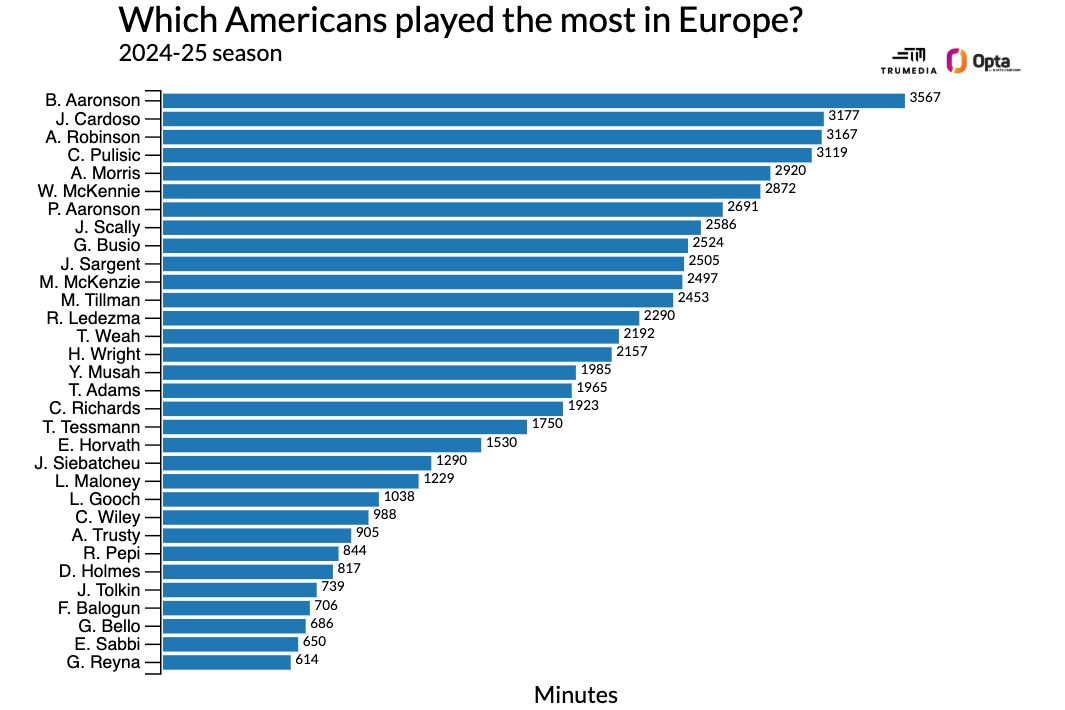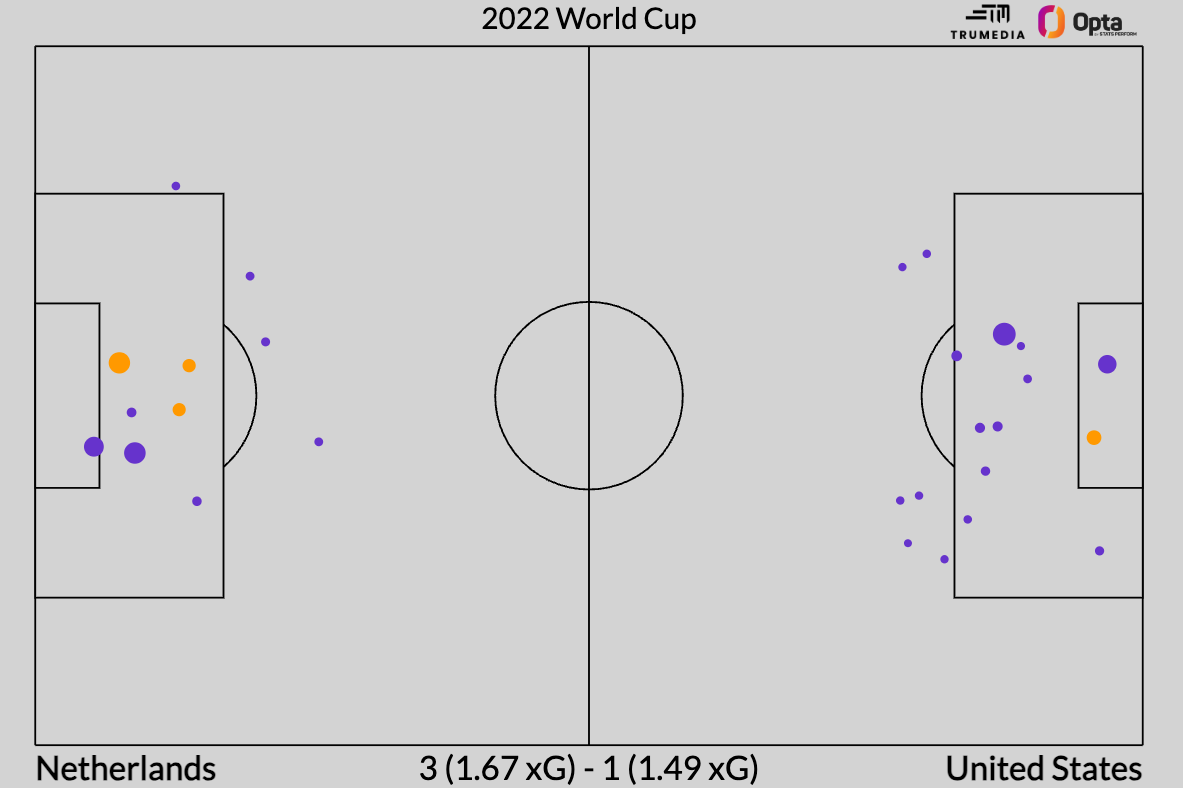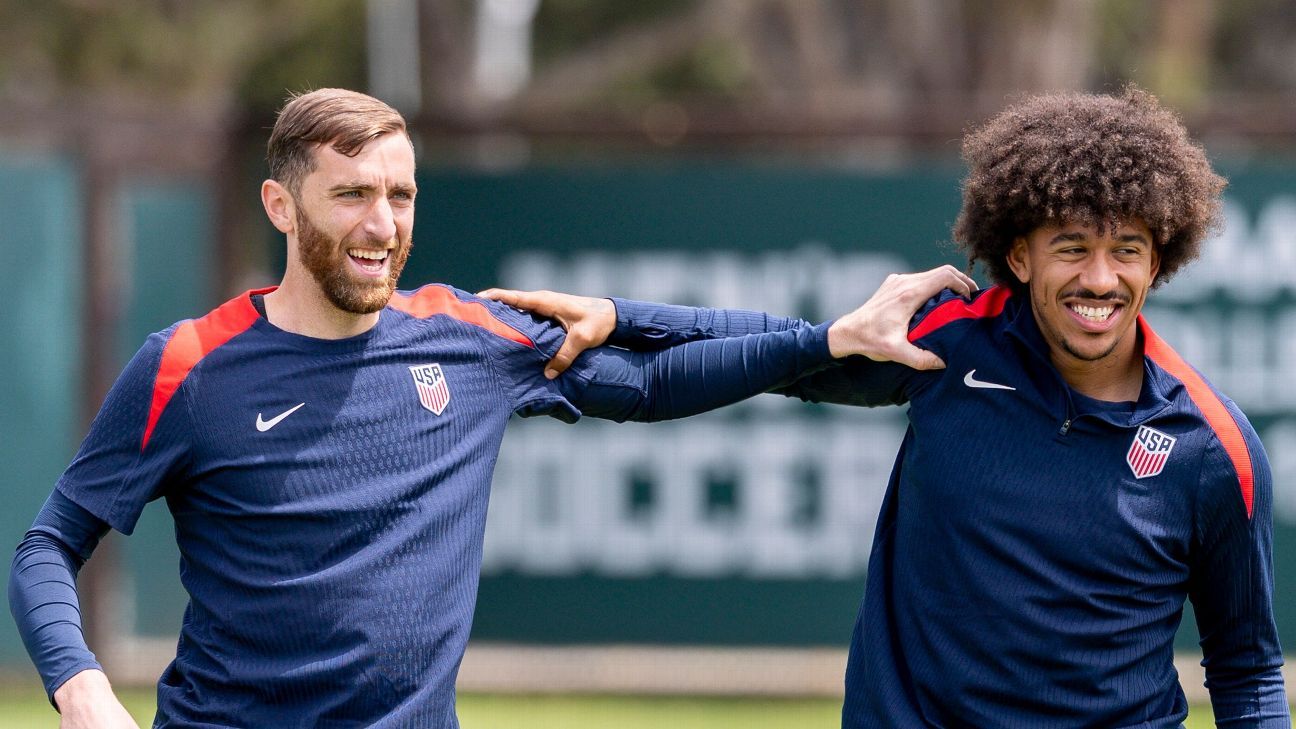With the 2026 World Cup approaching in less than a year, concerns are growing within the US male national team fanbase. The pressing question arises: should American players transfer to other clubs?
It’s essential to note that for American players, moving to prestigious clubs like Liverpool or Real Madrid isn’t straightforward. While the allure of challenging oneself and securing financial gain is strong, joining such top-tier teams often means limited playing time. Heading into the World Cup with players lacking regular match experience could be detrimental.
The notion that a strategic selection of clubs is crucial for USMNT’s success stems from the desire for optimal performance. The ideal situation would find players in competitive environments that not only provide consistent play but also promote their growth.
A 2019 study in *Nature Communications* introduced the “80% rule” for effective learning, highlighting that a balance between challenging and achievable tasks is vital. Fans hope each player can find a club that allows them to operate within this optimal learning zone.
However, reality often diverges from this ideal as American players face various challenges in their club environments. With the market’s demands clashing with those of USMNT, the current transfer window will be pivotal for assessing the team’s prospects for the 2026 World Cup.
Playing Time Overview Across USMNT Talent Pool
We can set aside MLS for this analysis. The players likely to gain significant minutes for the USMNT next summer are unlikely to find that competitive edge in MLS alone; they must play in more competitive leagues to secure a World Cup spot.
Here’s a look at the 32 American players with the most minutes in Europe’s top five leagues this past season.

Leading the pack are standout players like Christian Pulisic, Antonee Robinson, and Weston McKennie, alongside consistent contributors such as Brenden Aaronson and Aidan Morris, while Johnny Cardoso recently joined Atletico Madrid.
Next come those who logged substantial minutes, albeit for lesser-known teams, while the third tier consists of players who experienced fluctuating starting positions on top teams. The final tier includes Ricardo Pepi and Giovanni Reyna, among other less regular contributors to the USMNT.
If the World Cup were to start tomorrow with all players fit, a possible starting 11 could involve Matt Turner in goal, with Sergiño Dest and Robinson as fullbacks, center backs Mark McKenzie and Chris Richards, a midfield trio of Tyler Adams, McKennie, and Yunus Musah, and a front three featuring Timothy Weah, Pulisic, and Folarin Balogun.
These players’ anticipated playing time leading up to the tournament includes:
Goalkeeper, Matt Turner: 0% of available minutes at Crystal Palace
Right back, Sergiño Dest: 9% at PSV
Center back, Chris Richards: 56.2% at Crystal Palace
Center back, Mark McKenzie: 81.6% at Toulouse
Left back, Antonee Robinson: 92.6% at Fulham
Midfielder, Tyler Adams: 57.5% at Bournemouth
Midfielder, Yunus Musah: 45.9% at AC Milan
Midfielder, Weston McKennie: 66% at Juventus
Right winger, Christian Pulisic: 72.2% at AC Milan
Forward, Folarin Balogun: 17.8% at Monaco
Left winger, Tim Weah: 50.4% at Juventus.
The average playtime for this predicted lineup currently stands at 49.3%. Excluding Matt Turner slightly raises the average to 53.6%, which appears to indicate a solid level of club play leading into the World Cup.
Nevertheless, the quality of that playtime also matters. Looking at club ELO ratings, Crystal Palace ranks 16th globally, with the other clubs falling in lower tiers: PSV at 25th, Toulouse at 75th, Fulham at 33rd, Bournemouth at 21st, AC Milan at 30th, Juventus at 22nd, and Monaco at 36th.
All together, these teams average to a lowly 30th on the list, suggesting that the average USMNT starter is gaining minutes on par with a mid-level AC Milan team, or in essence, a roster full of players performing similarly to an average Yunus Musah.
Assessing the Severity of This Issue
For context, take a glance at Argentina’s starting lineup during the World Cup final, where countries have immense depth in talent. Given that the tournament occurred midseason in Europe, we’re focusing on the minutes logged leading up to it rather than the entirety of the club season.
Goalkeeper Emi Martinez: 95.9% of minutes at Aston Villa
Right back, Nahuel Molina: 77.4% at Atletico Madrid
Center back Cristian Romero: 57.7% at Tottenham
Center back Nicolás Otamendi: 95.6% at Benfica
Left back Nicolás Tagliafico: 98.4% at Lyon
Midfielder Enzo Fernández: 87.7% at Benfica
Midfielder Rodrigo de Paul: 51.6% at Atletico Madrid
Midfielder Alexis Mac Allister: 99.8% at Brighton
Right winger Lionel Messi: 82.9% at Paris Saint-Germain
Forward Julian Alvarez: 42.7% at Manchester City
Left winger Ángel Di María: 20.7% at Juventus.
Their average minutes total 72.1%, showcasing that most players had a solid club presence leading into the World Cup. Unlike the USMNT, Argentina’s coaches can tailor selections based on club performance, with the result of blending talent leading to success.
USMNT’s dynamic differs greatly, lacking a wealth of depth. If we compare recent performance, while the team’s 2022 World Cup showing sparked varied opinions, they navigated a challenging group, securing a draw against England and narrowly losing to the Netherlands.

Here’s how playing time for the top 11 players in that tournament looked:
Goalkeeper, Matt Turner: 16.7% of Arsenal’s share
Right back, Sergiño Dest: 19.8% of AC Milan
Center back Walker Zimmerman: 82.8% at Nashville SC
Center back Tim Ream: 99.9% at Fulham
Left back, Antonee Robinson: 82.1% at Fulham
Midfielder, Tyler Adams: 92.6% at Leeds United
Midfielder, Yunus Musah: 67.4% at Valencia
Midfielder, Weston McKennie: 57.2% at Juventus
Right wing, Tim Weah: 23.4% at Lille
Center forward Josh Sargent: 77.7% at Norwich
Left winger, Christian Pulisic: 28.7% at Chelsea.
The average for these 11 players totaled 52.8%, indicating minimal improvement on current conditions. Nonetheless, the present squad possesses players actively competing at clubs that are, on average, stronger than the 2022 squad.
The Premier League has become increasingly competitive, with Robinson, Adams, and Richards all starting regularly. Musa’s switch to AC Milan showcases his intent to compete at a higher level, and Weah’s move to Juventus reflects his growth potential. The introduction of Balogun in lieu of Sargent also represents a strategic enhancement for USMNT.
Injuries impact USMNT’s potential playing time drastically, with both Dest and Balogun facing tough situations. If either is sidelined, their inability to transfer clubs might exacerbate issues.
0:49
Marcotti: Atletico Madrid is a big step for Johnny Cardoso
Gab Marcotti discusses Johnny Cardoso’s shift from Real Betis to Atletico Madrid as a significant move for the USMNT midfielder.
Turner is a player whose club situation could hugely influence his national team standing. Recently, he seems to have lost his place with the national team after three consecutive seasons of playing regularly. A potential move to Lyon was expected to remedy this, but their relegation to League 2 due to financial infractions complicates matters. As a goalkeeper, Turner needs consistent competition from quality opponents, regardless of club strength.
Other prominent figures from USMNT may shift clubs this summer, and while some transfers could be beneficial, others might not. Statistically, approximately half of transfers for fees exceeding $10 million lead to players achieving at least 50% playtime at the new team. For many, particularly Turner and Reyna, prolonged inactivity has stunted their progression, making the summer transfer window crucial but possibly ineffective regarding USMNT’s performance in the upcoming World Cup.
Pulisic shone as the best player for USMNT in the last World Cup despite grappling with club difficulties. With minimal starts at AC Milan, Dest managed more assists than anyone outside of Pulisic.
This scenario mirrors other global examples; for instance, Argentina’s Lionel Messi starred alongside players who also faced club disappointments. Despite this, effective team dynamics during the tournament led to their ultimate success.
Despite concerns over player fit and form, the overall performance of players within their club systems can indicate potential success on the international stage. The overarching narrative of how tactical decisions and team chemistry affect outcomes remains pivotal for soccer fans, particularly as the USMNT prepares for the next World Cup.
Fan Take: As soccer fans, this analysis underscores the importance of club-level performance ahead of international tournaments. The upcoming transfer window is not merely a matter of player movement; it could determine the fate of US soccer on the world stage.



